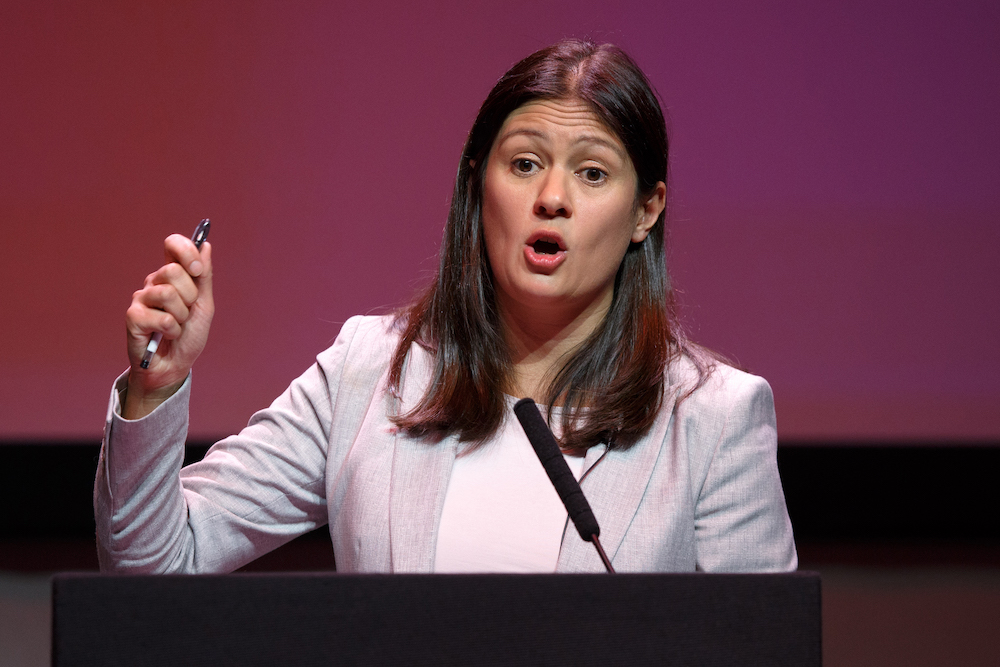After the election of a Labour government in the UK, the new Secretary of State for Digital, Culture, Media and Sport is Lisa Nandy, the MP for Wigan, who came in third place in the Labour leadership election in 2020. Her previous shadow ministerial posts include international development, foreign affairs and the department for communities, housing and levelling up, among other briefs. The shadow arts and culture minister Thangam Debbonaire, an accomplished cellist popular with the arts sector, failed to be elected in the new seat of Bristol Central, losing to the Green Party candidate by more than 10,000 votes.
Plans for an outpost of the Centre Pompidou in New Jersey have been postponed indefinitely after the New Jersey state legislature reallocated $24m in funding. The Centre Pompidou x Jersey City project was announced in 2021, to be located in the Journal Square neighbourhood. The New York Times reports that despite both the city and the state agreeing to cover the $176m construction costs of the institution, neither could agree on how the operating costs were to be met. The mayor of Jersey City, Steve Fulop, blamed the stalling of the project on his deteriorating relations with New Jersey governor Phil Murphy; Fulop failed to support the candidacy of Murphy’s wife in a Senate primary. A spokesperson for the governor denied that this is the case. The outpost would have been the Pompidou’s first in North America and the stalling of the project comes after the institution’s finances were described as unsustainable by France’s national audit authority. The Beaubourg building is set to close in September 2025 for a five-year refurbishment and the Pompidou is also opening a conservation and creation centre in Massy.
The board supervising Documenta has appointed a new committee to find an artistic director for the 2027 edition of the contemporary art event in Kassel. The previous search committee resigned en masse in November last year after the critic Ranjit Hoskote was encouraged by Documenta’s board to distance himself from a petition he had signed in 2019 supporting the Boycott, Divest and Sanctions (BDS) movement against Israel. (Around the same time, another committee member, the Israeli artist Bracha L. Ettinger, resigned because she felt that she was unable to travel to a meeting in Germany amid ‘dark times’ for her home country.) Artnet reports that the new committee of six includes Yilmaz Dziewior, director of the Museum Ludwig in Cologne and Mami Kataoka, director of the Mori Art Museum in Tokyo. It is inviting applications from would-be artistic directors with immediate effect. At Documenta 15, which took place in 2022 and was curated by the Indonesian collective ruangrupa, several artworks containing anti-Semitic imagery were removed and the festival’s then-managing director resigned. Andreas Hoffman, current managing director of the troubled event, said in a statement: ‘This lays the foundation for the international art world to once again be a familiar and welcome guest in Kassel.’
The Los Angeles County Museum of Art (LACMA) has been accused by South Korean art experts of displaying counterfeit works in one of its recent exhibitions. Among the 35 artworks presented in ‘Korean Treasures from the Chester and Cameron Chang Collection’, which ran from 25 February until 30 June, were works attributed to Lee Jung-seob (1916–56) and Park Soo-keun (1914–65). Although concerns about their authenticity were raised in the South Korean daily newspaper JoongAng Ilbo as early as February, which led to the Galleries Association of Korea contacting LACMA in April about the matter, the museum did not hold an official appraisal until late June, when they invited four Korean art experts to examine the works under suspicion. The experts concluded that two works by Lee and two by Park were fakes, and criticised LACMA’s provenance research process as well as what JoongAng paraphrases as the museum’s ‘lack of a general understanding of Korean art’. The works in LACMA’s exhibition were drawn from a collection of 100 artworks and objects donated by Drs Chester and Cameron Chang in 2021.
The Dutch artist Jacqueline de Jong has died at the age of 85. De Jong was involved with the the Situationist International, although like several members, she was expelled by its founder Guy Debord. Nevertheless, from 1962–67, she promoted the avant-garde movement’s ideas by editing the English-language publication The Situationist Times. De Jong was born in 1937; she and her mother fled the Nazi occupation for Switzerland in 1942 and returned to Netherlands after the war. After a brief spell studying at the Guildhall School of Music & Drama in London, she got a job in the industrial design department of the Stedelijk Museum and met the Danish artist Asger Jorn. For six decades De Jong worked in mediums as varied as sculpture, books and printmaking, but she is perhaps best known for her paintings. Read Samuel Reilly’s interview with Jacqueline de Jong for Apollo in 2020.
The oldest example of figurative cave art has been discovered in Sulawesi, Indonesia. Estimated to be more than 51,200 years old, the painting depicts three hominid figures and a wild pig, and is several millennia older than the artworks previously thought to have been the oldest extant examples of figurative cave art. ‘It is the oldest evidence we have for storytelling,’ said Maxime Aubert, a professor of archaeology and geochemistry at Griffith University in Queensland, Australia. ‘It shows that humans at the time had the capacity to think in abstract terms.’ Though the discovery – which was made by a team of scientists led by Adhi Agus Oktaviana, an Indonesian rock art specialist from the National Research and Innovation Agency (BRIN) in Jakarta – marks a watershed in terms of figurative art, examples of more abstract art date much further back: cave paintings from what is now Spain have been dated to more than 64,000 years ago. There is also evidence of drawing from as far back as 100,000 years ago, found on rocks in Blombos Cave on the southern tip of Africa.



